Chantilly Racecourse
Chantilly Racecourse is a horse-racing track in Chantilly, Oise, France.
It opened in 1834, at Av. de la Plaine des Aigles.
History of Chantilly Racecourse
1833 – Prince Lobanov and his comrades discovered a soft, silky terrain ideal for racing. It is a grassy plain that became home to the Hippodrome de Chantilly a year later. The first unofficial race was then held on the Chantilly lawn. Foundation of the Société d’Encouragement pour l’Amélioration de la Race Chevaline (The Society for the Encouragement of improving horse breeds) is now known as France Galop.
1834 – Creation of the racecourse on the lawn area provided by the Orléans family and the organization of the first races on May 15, 1834. The foundation of the Jockey Club circle.
1835 – The first temporary stands were installed.
1836 – Prix du Jockey Club, also known as the Chantilly Derby was created.
1843 – Prix de Diane was created.
1847 – Upon the request of the Duke d’Aumale, the architect Grisart builds the first stands by his architect Jean-Louis Victor Grisart.
1879 – Grandstand was built by the famed architect Honoré Daumet, who renovated the nearby Château de Chantilly.
1881 – Several visitors flock to the races that the Duke d’Aumale orders the architect Daumet to construct a new stand.
1886 – Duc d’Aumale donated the racecourse to the Institut de France.
1890 – As there is no space in the center of the town, the Quartier Bois Saint-Denis is created to
house the racing stables.
1891 – Charles Girault, a pupil of Daumet, built the weighing building
1897 – As the Chantilly train station is too small to accommodate racegoers who travel from Paris on important race days, the number of platforms was increased to 12 at the Chantilly races station, which can now accommodate 25 000 people in two hours.
1900 – The training center “Aigles” at Gouvieux was created.
1911 – The tribune of the committee, the former tribune of the prince, was rebuilt by the
architect Saint-Ange.
1915 – First World War stops racing at Chantilly. The racecourse remains closed for four years.
1922 – Léopold Bara starts the S.T.H.: Société de Transport Hippique (Horse transport company).
1940 – The Aigles training center was requisitioned and turned into a military airport. The racecourse was closed.
1948 – The racecourse and the Aigles training center were reopened.
1982 – The Living Museum of the Horse was built as part of the stables and opened to the public.
1984 – Living Museum of the Horse in Chantilly was opened.
1994 – The France Galop considered closing the Chantilly Racecourse.
1998 – Chantilly racecourse was saved from closing because of the local community. A public interest group called the “Initiative for Sustainable Development of Chantilly” (IDC) was created. The Group launched a campaign to modernize the racecourse, bringing together France Galop, the community of communes of the Cantilian area, the Institut de France, the State, the Regional Council of Picardy, the General Council of Oise, the city of Chantilly and the Aga Khan Development Network. The grandstand was completely renovated and thickened, and a panoramic restaurant was installed.
2004 – The whole renovated racecourse was inaugurated on May 28, 2004.
2006 – In July, the Foundation for the Safe-keeping and Development of the Chantilly Domain (presided over by Aga Khan IV) acquired the museum.
2010 – The Global Champion’s Tour occurs at Chantilly and becomes a fixture in the International Jumping calendar.
2011 – France Galop commissioned a fiber sand track, the only one in the Paris region. It was completed in December 2011
2012 – The first race occurred on the new fiber sand track in March. Since then, Chantilly has also been running in winter because these tracks are designed to withstand bad weather.
2013 – The new Horse Museum opened in the Great Stables at Chantilly.
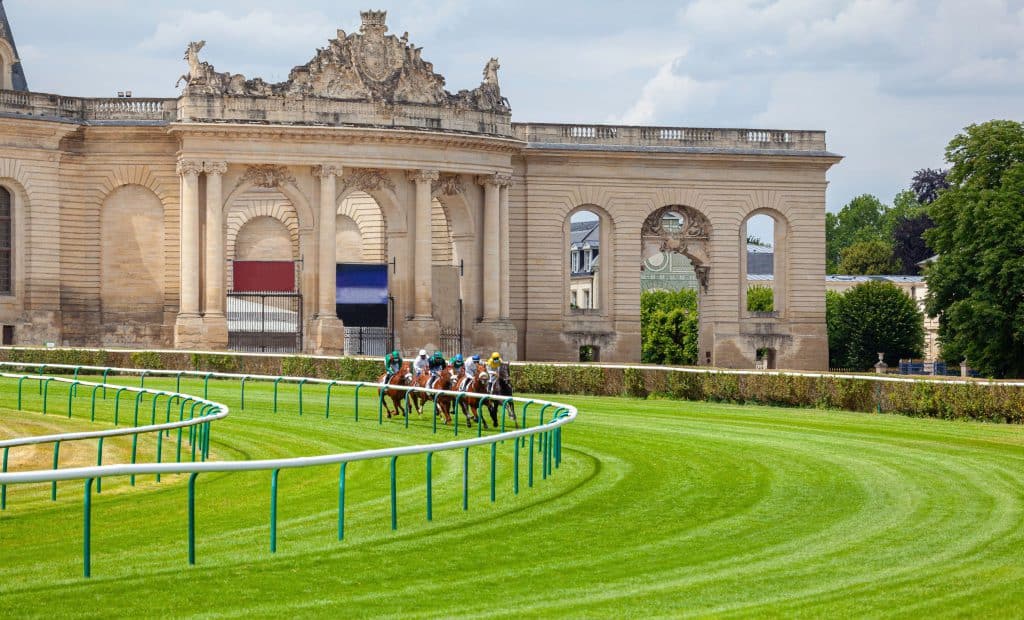

Main Track
- This race track is a right-handed course built with interlocking tracks.
- The racecourse is spread over 65 hectares of land.
5 Racetracks
- A Large Track or Jockey Club track (Turf)
- It measures 2,400 meters.
- It has a finish line of 600 meters, a drop of 10 meters uphill over the last 800 meters, course of 1,600 to 4,800 meters.
- A Straight Line (Turf)
- It measures 1,200 meters (a course of 1,000 to 1,200 meters).
- Middle Track (Turf)
- It measures 2,150 meters.
- It has a finish line of 550 meters and a vertical drop of 10 meters uphill.
- A course of 1,600 to 2,600 meters.
- A Round Track (Turf)
- The course is from 1,400 meters to 2,400 meters.
- All-Weather Track
- A 6,500-meter fiber sand track.
- The finish line is 550 meters and width of 20 meters.
- It is the first to be developed on one of the Parisian racecourses, in autumn 2011.
Track Details
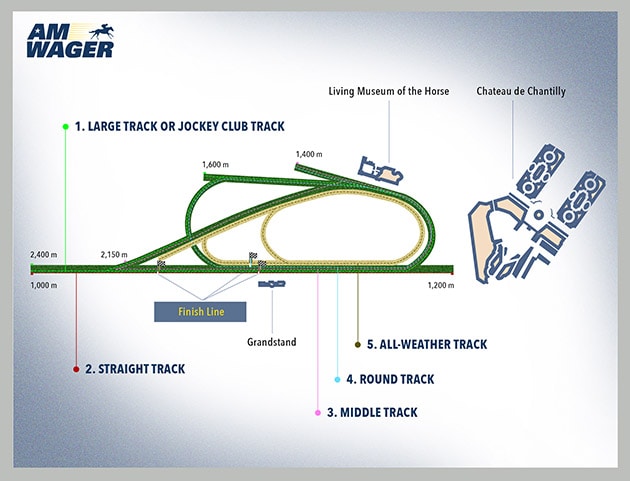
Training track
- 120 hectares of grass tracks
- 120 kilometers of sand tracks
- 12 km of obstacle tracks marked out by 100 obstacles
- More than 2,600 racehorses are stationed at Chantilly at peak times
Other Facilities
Living Museum of the Horse (Musée Vivant du Cheval)
- The Museum of the Horse is open to all visitors, experts, and novices alike.
- Its resolutely contemporary museography, offering a large number of interactive resources, gives visitors a vision of the horse and its history that is both pedagogical and enjoyable.
- Almost 200 objects and works of art: paintings, prints, sculptures, manuscripts, equestrian equipment
Château de Chantilly
- It offers a wide range of activities for a family day out.
Services
- Wheelchair access
- Lifts
- Goods elevator
- Private parking
- Outdoor spaces
- Catering office
- Signage screens
- Training center
- Daylight
- WIFI
- Bar
- Stables
- ATM
- Binocular rentals
- Gift shop
- Food services
Dining
Panoramic Restaurant
- Guests can dine with a panoramic view of the track.
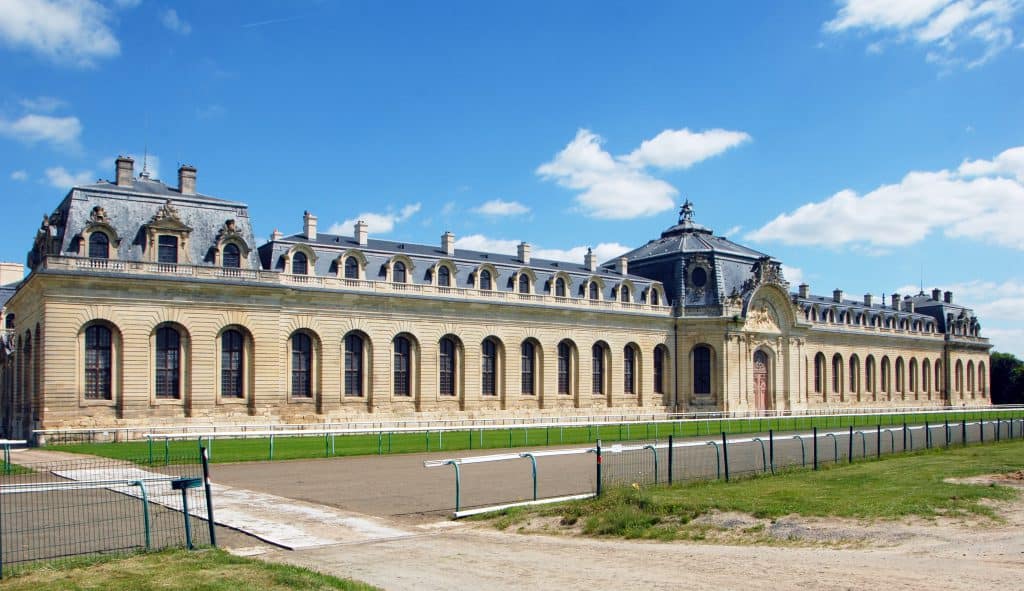
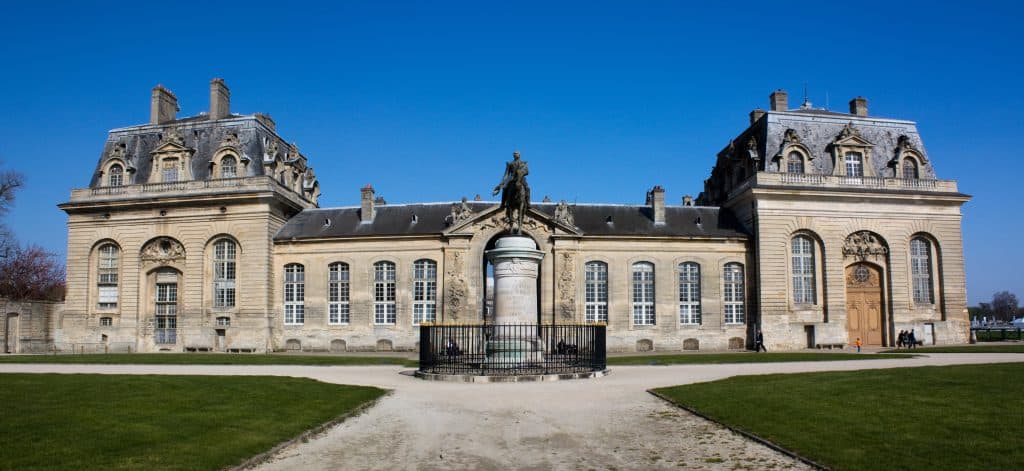
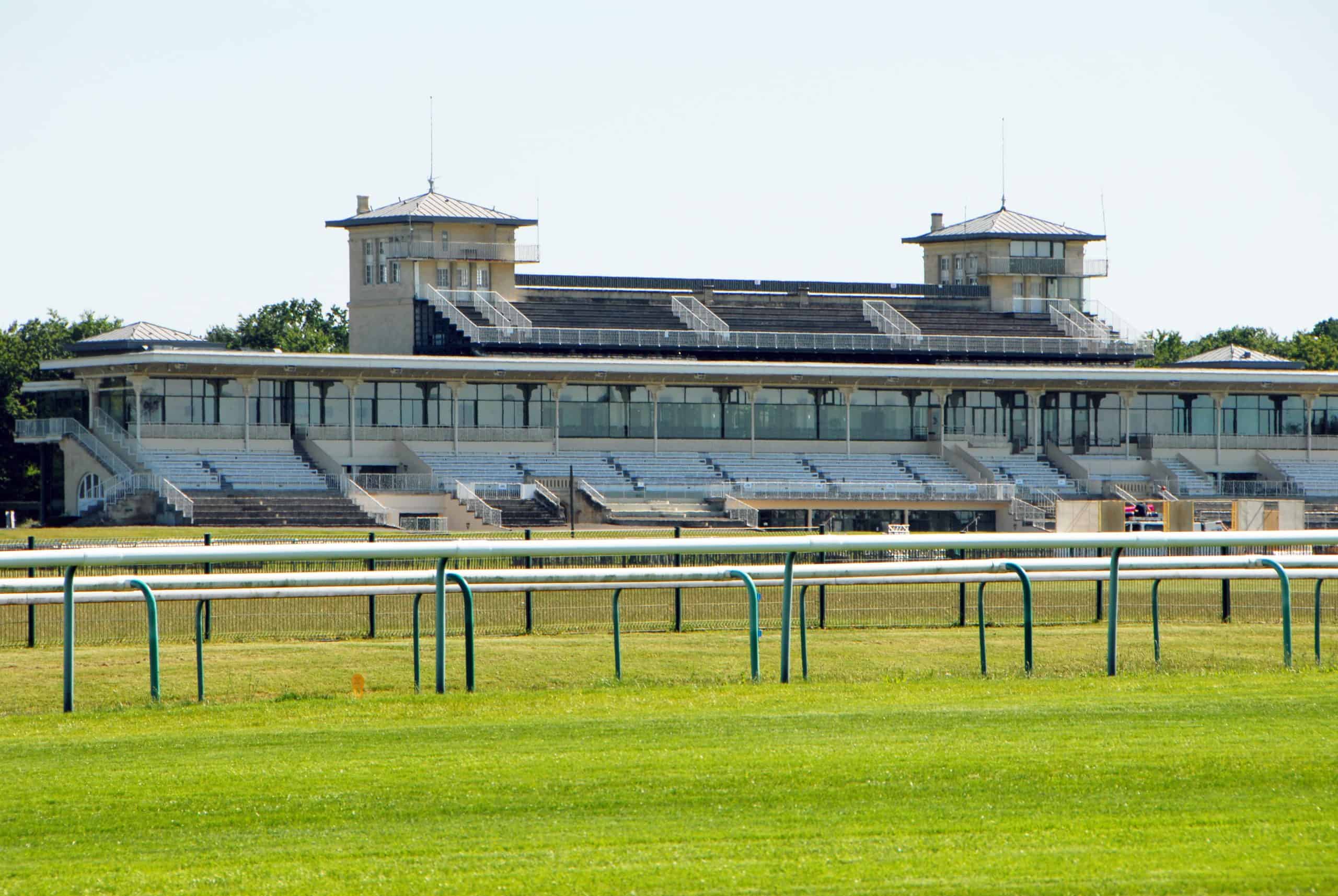
Race Schedule and Major Events & Races
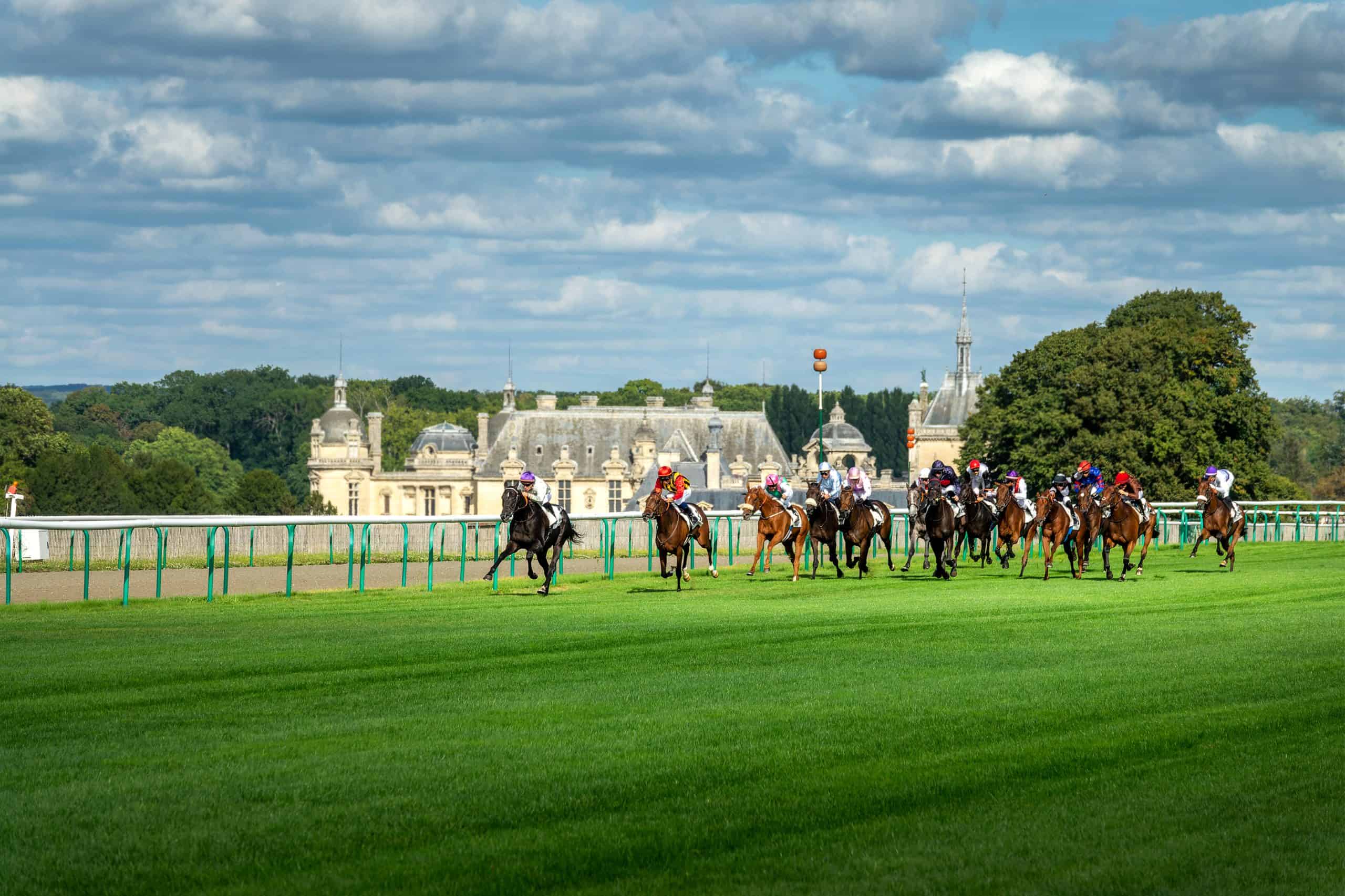
Chantilly Race Schedule
🐎 Live Racing Schedule
- It has a Thoroughbred turf racecourse for flat racing (galloping).
- The racecourse hosts nearly 200 races yearly, about an average of 40 days of racing per year.
- Racing Months:
- Racing throughout the year except August.
- January to July and September to December.
Major Races
- 🐴Prix du Jockey Club (known as the French Derby)
- 🐴the Prix de Diane (French Oaks)
- 🐴the Prix de l’Arc de Triomphe
- 🐴Prix Jean Prat
Location and Access to the Racecourse
- It is located in the country’s main horse training area on 65 hectares next to the Chantilly Forest.
- It is in Oise, France, about 50 kilometers (31 mi) north of the center of Paris.
- Parking capacity: 1000 cars
- Admission Discount
- Reduced rate: 12 to 18 years old, students, over 60s, job seekers, PWD guides, and Club France Galop card holders.
- Free on General Admission: 12 years old, PSH, beneficiaries of the PMU card (Silver Pass, Gold Pass, and the Le Club My PMU card.


Contact
- Av. de la Plaine des Aigles, 60500 Chantilly, France
- Phone: +33 3 44 62 44 00
https://www.france-galop.com/en/hippodromechantilly
You can also check Chantilly race results and Chantilly race entries using our AmWager platform for FREE!
It is easy to access and fast as 1, 2, 3!
So what are you waiting for?
STOP HORSING AROUND, GET SERIOUS, GET AMWAGER !
Sign Up now for FREE and wager like a PRO with AmWager